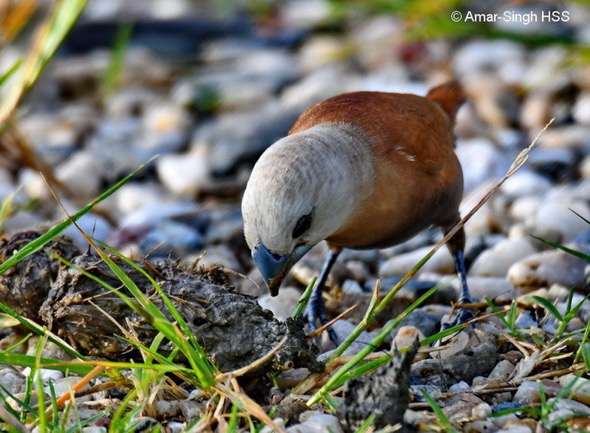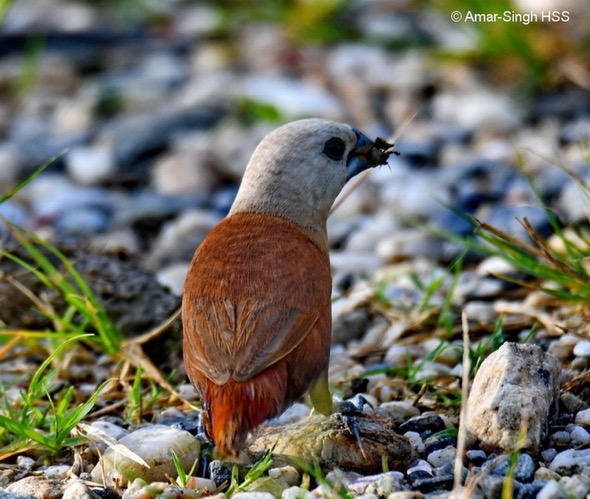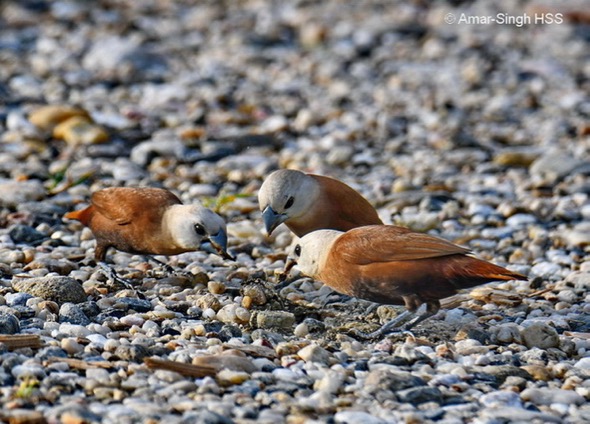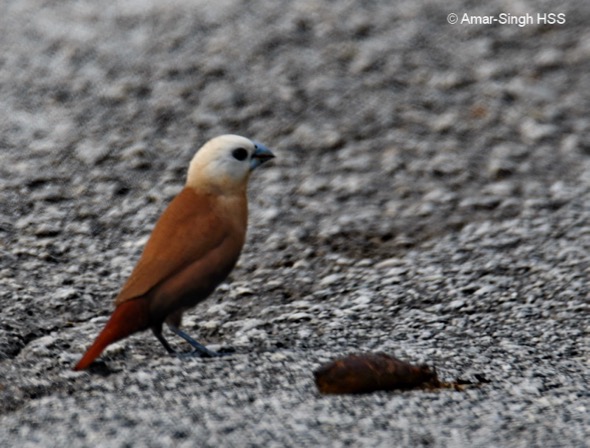
“I came across 6-7 White-headed Munia (Lonchura maja) feeding on cow dung. The dung patches were mostly dry and crusted on a gravel road, and they were pulling pieces out of it. I have seen other birds explore cow dung but not munia.

“Initially my opinion was that they were looking for seeds in the dung. Harrison (1999) in ‘A Field Guide to the Birds of Sri Lanka’ does mention of some species of munia that ‘feeds on seeds, even picking through dung’.

“Later in the morning at another site, half across the city I met up with another 3 White-headed Munias, this time exploring dog dung. I doubt dog seat grass seeds.

“I have now considered other possibilities.
“At both sites there was an abundance of seeds all around in the environment. I have previously reported Scaly-breasted Munia (Lonchura punctulata) feeding on green alga (Spirogyra sp.) as a source of protein to enable them to become physiologically ready for breeding LINK.
“I wonder of the White-headed Munia are feeding on something in the dung that aids with breeding? Otherwise it’s like Luwak coffee which improves after passing through Common Palm Civet (Paradoxurus hermaphroditus) dung LINK. Perhaps seeds taste better in animal dung.”
Dato’ Dr Amar-Singh HSS
Ipoh, Perak, Malaysia
26th May 2017
Location: Ipoh, Perak, Malaysia
Habitat: Outskirts of the city, urban environment









2 Responses
Hi Amar,
In 2015 I posted an article, “Scaly Munis Eats canine Excreta at Sepilok N.Borneo”.
Your posting suggests probably other Munia species doing similar except such observations went un- noticed except to keen eyes like yourself.
Growing up in surroundings of a dog loving family, it was observed dogs chew and swallow grass when unwell to induce a vomit. Seeds if any in their pickings and ingested likely to be coincidental.
Awaiting the return of my laptop -gone for ‘cardiac transplant”.
Please excuse the silence to do more contribution.
Cheers!
Daisy
Dear Daisy
At no time did I suggest that these were observations unique to myself, having also quoted other observers, or due to an prowess on my part. I was merely describing my observation & suggesting possibilities for the behaviour.
I appreciate your comment on dogs & grass and have also seen them do the same.
Amar